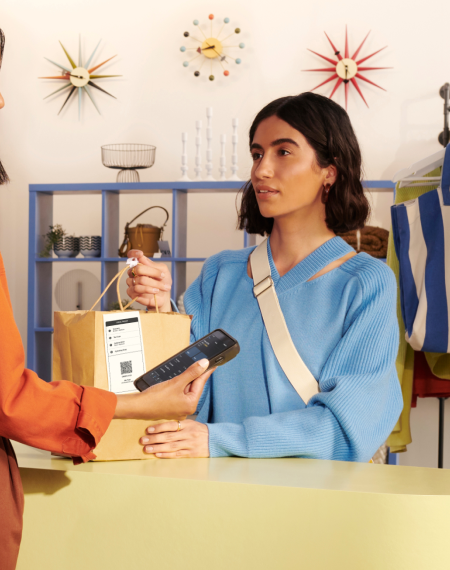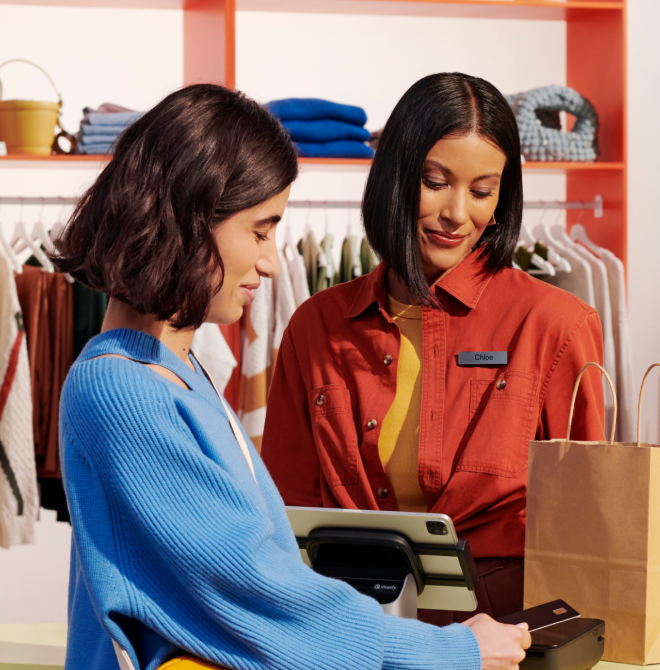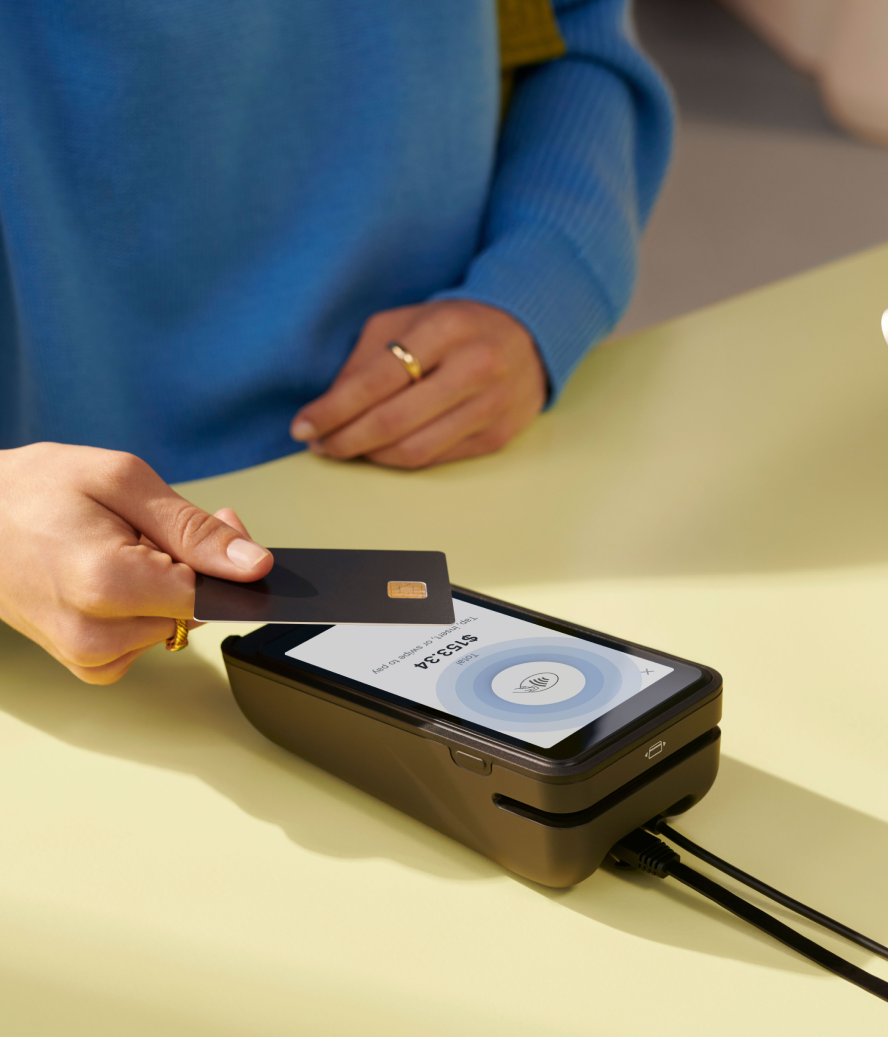What’s next for the world of omnichannel retail? You may be tempted to look back over the past few years and expect the same trends to continue into 2025 and beyond.
In some ways, you’d be right: many of these trends are persisting and growing in popularity. Online retail sales are projected to reach $1.6 trillion by 2028 in the US alone, with brick-and-mortar expected to claim more than three-quarters of all sales.
But there’s a stark difference in how consumers shop. Just 15 years ago, the average consumer only needed two touch points when buying a product. These days, that can exceed 50, spanning online and offline channels—reinforcing the idea that an omnichannel approach has become a necessity for retail store owners.
Here’s a breakdown of omnichannel trends that will come to define this year, with guidance on how you can keep up.
- Gen Z is the driving force behind the omnichannel trend
- More digitally native brands enter the brick-and-mortar space
- Consumers crave immersive in-person experiences
- Fulfillment channel doesn’t equal sales channel
- The continued growth of showrooming
- Virtual shopping supplemented with augmented reality
- Mobile wallets and apps dominate in-store payments
- B2B follows suit with omnichannel preferences
1. Gen Z is the driving force behind the omnichannel trend
Gen Z, born between the late 1990s and early 2000s, are driving forces in all aspects of retail. They’re internet-savvy and have grown up alongside rapid advancements in technology.
More than half of Gen Zers feel more insecure without their smartphone versus without their wallet—an insecurity that heavily influences their shopping habits.
A recent study found that two-thirds of Gen Zers use their smartphones to search for coupons and offers in-store. Almost 32% say a retailer’s mobile app helps them discover new brands or products while shopping at a retail location.
The simplest solution? QR codes. Although they sound like a fleeting pandemic trend, more than half of shoppers say compelling content on an ecommerce product page has swayed them into making unplanned purchases. Place QR codes beside products in-store to offer these experiences. Shoppers can evaluate products themselves without assistance from an associate.
Don’t rule out this aspect of mobile commerce if you’re targeting other demographics. Other age groups are also likely to use their smartphones in-store. Per one report, 64% of all consumers have scanned QR codes to compare prices, view product information, and access digital coupons—up from just 46% last year.
2. More digitally native brands enter the brick-and-mortar space
Ten years ago, connecting with customers online was much more affordable than paying rent for a storefront. But customer acquisition costs have skyrocketed due to intense competition and cookie tracking limitations imposed by browsers.
Location-agnostic ecommerce brands have a certain leg up—they can expand their reach globally and acquire customers outside of a specific location.
However, they miss out on a certain perk of physical stores: the local community. Local brick-and-mortar stores hold a unique flair as our society—from shopping to socializing—becomes increasingly digitized. They provide shoppers with the in-person experience they crave, and they rally around the community in a way that builds loyalty and camaraderie.
Retailers don’t have to choose between ecommerce and brick-and-mortar; nor does moving into physical retail take away from your DTC status. Experiment with a pop-up shop to engage with the local community and mix up how customers interact with your brand and products.
Elite Eleven was an early adopter of this trend, experimenting with pop-up stores amid COVID-19 lockdowns. It was a chance for the sportswear brand to connect with customers in the flesh and strengthen relationships with loyal fans.
Elite Eleven leaned on Shopify’s unique ability to unify POS and ecommerce on the same platform. Inventory, transaction, and customer data from its online store synced seamlessly with the point-of-sale (POS) system. This allowed the brand to create a unified shopping experience available to every customer, regardless of their preferred channel—which helped Elite Eleven experience 240% growth and 50% growth in retail POS and online retail sales, respectively.
3. Consumers crave immersive in-person experiences
The primary function of retail stores is no longer transactional. The need to interact with products before buying is a common reason for shoppers to head in-store.
Consumers are hungry for in-person shopping experiences and the camaraderie that comes with them. That’s why brands use immersive retail experiences to stand out from the competition—82% of retailers increased their investment in experiential marketing to enhance the customer’s in-store shopping experience.
Put this into practice in your retail store with experiences such as:
- Community events
- Shop-in-shop collaborations
- Hands-on workshops
- Product masterclasses
- Free sampling or demo stations
For example, Lingerie brand LIVELY offers fitting sessions to help shoppers who are unsure on which size to buy. Customers can book their session through its online website, then turn up to their appointment with a friendly retail associate who will do their measurements and guide them towards a personalized bra recommendation.
It’s proven a profitable strategy: 30% of LIVELY’s in-store revenue comes from customers who’ve prebooked a bra fitting session through its online store. Those orders also have a 60-80% higher value compared to those from customers who just walk in.
4. Fulfillment channel doesn’t equal sales channel
Not even a decade ago, the digital and physical shopping experiences were two separate entities. Today, they’re blended together in such a way that retailers can no longer find the dividing line.
This seamless shopping phenomenon manifests itself post-purchase in a few ways:
- Buy online, pick up in-store (BOPIS): Retailers can offer BOPIS to satisfy consumers who prefer to browse online without having to wait for shipping. Some 59% of consumers are interested in this service, with click-and-collect sales tipped to exceed $154.3 billion in 2025.
- Buy online, return in-store (BORIS): Increased shipping costs have trickled down to consumers, especially the rates associated with online returns. Stores are now offering customers the ability to return unwanted items in-store, effectively saving on return shipping costs and inadvertently helping retailers balance out their inventories.
Venus et Fleur uses Shopify’s commerce platform to offer these shopping experiences without the traditional headache of fragmented systems.
With Shopify, the retailer can integrate inventory, customer, and transaction data from every sales channel into a centralized operating system—even using this data to show customers a custom calendar to schedule their in-store pickup at checkout. This feature alone has helped Venus et Fleur reduce abandoned checkouts by 12%.
“Shopify has streamlined our operations by enabling us to manage all of our sales channels in one place,” says head of ecommerce Brendan Gorman. “The platform’s ecosystem of tools has been key in helping us maintain the quality, consistency, and personalization that define Venus et Fleur’s approach, ensuring that we can continue to scale while fulfilling our vision as a luxury omnichannel retailer.”
5. The continued growth of showrooming
The showrooming phenomenon allows customers to visit your store to test products, try on apparel, learn from your associates, and generally experience your brand, before returning home to complete their purchase online.
Showrooms typically carry less inventory (a strategy on its own), instead offering customers the option to buy products in-store and ship their purchases directly to their house. Not only does this alleviate the pressure on retailers to overstock their inventories, it also offers an added convenience for shoppers who:
- May not be able to find their preferred product in-store, and
- Don’t want to carry around their purchases.
Home furnishings brand Parachute demonstrates the use case of ship-from-store. Customers who visit the store during an event can take their time to interact with products. Cashiers can use its POS system to take the order and ship larger products directly to the customer’s home if they want to order a bigger, bulkier item but don't want to carry it around.
Since offering this service, Parachute averages 72 ship-from-store orders per day, contributing to over 26,000 orders each year from its network of 17 brick-and-mortar stores.
“By utilizing our stores as fulfillment centers, we can respond to customer demand more effectively and minimize excess inventory," says retail operations manager Juliette Grant. "It's a win-win for us and our customers."

6. Virtual shopping supplemented with augmented reality
In years past, one perk of visiting brick-and-mortar stores was to access knowledgeable sales associates. This was especially true for apparel stores and big-ticket retailers like furniture or appliance stores.
Today, however, virtual shopping has allowed shoppers to enjoy the perks of in-store shopping from home. Through real-time connections, shoppers can ask questions, virtually try on products, and get recommendations from experts—just as they’d do when browsing in the flesh.
Luxury fashion retailer Rebecca Minkoff implements this with augmented reality (AR). In-store, shoppers can use virtual fitting rooms to overlay a product onto a live stream of themselves, without the need to physically hold the product. Online shoppers get the same omnichannel personalized experience with 3D modelling and AR on product pages.
“3D media makes for a much more interactive shopping experience,” says co-founder and CEO Uri Minkoff. “Customers can examine our products from every angle, including the option to view products in augmented reality, which helps them get a better sense of quality, size, and other details that matter.”
The brand reports major success with this investment in technology. It says shoppers are 44% more likely to add an item to their cart after interacting with a product in 3D, and 27% more likely to place an order.
7. Mobile wallets and apps dominate in-store payments
We already know that retail store owners like to create in-store apps for their customers. This is more than just an indication of a trend that’s here to stay; it’s indicative of overall buyer psychology.
Retailers and brands will still push their in-store apps. And if these apps improve the customer experience enough, customers will still enjoy using them. But without these new safety-driven options as part of the package, brands could miss out on omnichannel wins.
In 2025, mobile apps aren’t just a way for customers to discover product details—they’re integrated into every part of the sales process, from discovery to loyalty:
- Payment. Mobile wallets such as Apple Pay and Google Pay accounted for 28% of all in-person transactions in 2023. That’s tipped to exceed 30% by 2027.
- Omnichannel loyalty. Almost 70% of consumers say an in-app loyalty program would make them spend more. Another 84% say it’d increase their loyalty to the retailer.
- Shipment tracking. Shopify merchants can collect a customer’s email address at checkout and connect their details to a Shop App profile. When synced, shoppers can monitor their ship-to-home purchases from the mobile app. They can also opt to pay for in-store orders in installments through Shop Pay Installments.
BLTY Basics leveraged Shopify’s extensive app ecosystem to roll out its omnichannel loyalty program. It built a mobile app with the help of TapCart and a loyalty program powered by Inveterate—both seamlessly integrate with its Shopify online store and POS system.
“The ability of our loyalty members to redeem their rewards from anywhere is so important,” says its head of ecommerce Ryan Groh. “By using Shopify Checkout, we have our bases covered on the website and mobile app. And now, thanks to the integration between Inveterate and Shopify, our retail teams can help customers redeem and earn their loyalty points with the simple click of a button on the POS tile, creating a frictionless checkout experience.”
The results of BLYT’s mobile loyalty program speak for itself: 10% of all conversions now come through its loyal in-app customer base.
8. B2B follows suit with omnichannel preferences
It’s not just DTC consumers that demand omnichannel experiences from the brands they’re shopping with. Business-to-business (B2B) buyers have the same expectations.
McKinsey found that the average buyer uses 10 different interaction channels in their buying journey—up from just five in 2016. More than half of wholesale buyers want a true omnichannel experience where they can interact and buy while switching across multiple channels. And they’re willing to walk away if those expectations are unmet.
Cater to these demands by giving B2B the DTC experience. Shopify lets you create a password-protected wholesale portal with custom price lists and payment terms. This B2B storefront is easily customizable with multi-currency and multi-language options.
Plus, Shopify is the only platform to natively unify ecommerce and POS—so if you’re selling in-person to wholesale buyers, you can skip the lengthy setup process and give B2B buyers the personalized omnichannel experiences they crave.
Perfect your omnichannel retail strategy with Shopify
Some omnichannel trends are obvious: buying online and picking up in-store or social selling, for example. Others—like the growing affordability of brick-and-mortar retail—may have come as a surprise. Regardless, we hope we’ve spotlighted a few trends and expert insights that you may not have considered.
Shopify gives scaling retailers the tools to meet customers’ growing omnichannel expectations without the logistical headache traditionally came with it. One centralized commerce operating system means one source of truth—no patchy middleware, third-party costs, or maintenance fees that wind up costing more than you’d planned.
Don’t just take our word for it. According to an independent research firm, retailers using Shopify POS benefit from:
- Up to 37% lower total cost of ownership
- 21% lower training and onboarding costs
- 20% faster implementation time
Read more
- Phygital Retail: What is It and What are the Benefits? (+ 6 Real-Life Examples)
- Tokyobike Doubles its In-Store Pickup Sales by Switching From Lightspeed to Shopify POS
- How LIVELY's Omnichannel Approach Increased Average Order Value by 80%
- 18 Signs It’s Time to Switch POS System Providers
- 5 Strategies to Future Proof Your Brick-and-Mortar Store
- How Retail Store Owners Can Optimize Their Mobile Presence
- Meet the Business Owners Whose Leap of Faith Led to 10+ Years of Retail Success
- Lightspeed vs Shopify POS: The Best of All Lightspeed Alternatives
- Click and Collect: Reduce Returns And Increase Foot Traffic With In-Store Pickup
Omnichannel trends FAQ
What are omnichannel trends?
- Gen Z use smartphones in-store
- More digitally native brands open brick-and-mortar stores
- Consumers crave immersive experiences
- Shoppers blend fulfillment channels
- The showrooming model continues to grow
- Virtual shopping uses augmented reality
- Mobile wallets and apps overtake in-store payments
- Retailers use unified customer profiles to personalize
- B2B goes omnichannel
What is the omnichannel retail trend?
The omnichannel retail trend is a strategy that brands use to offer seamless shopping experiences wherever the customer engages. It can include retail stores, ecommerce websites, mobile apps, social media storefronts, and marketplaces.
What is the future of omnichannel?
Unified commerce is the future of omnichannel. It means streamlining your retail operations to make selling omnichannel easier, reducing platform costs, and removing patchy middleware traditionally associated with selling omnichannel. This is only possible when POS and ecommerce are built natively on the same platform.
What's next after omnichannel?
Unified commerce is the next phase of commerce, proceeding omnichannel. It happens when sales channels, operations, and processes are consistent and built natively on the same centralized platform.





